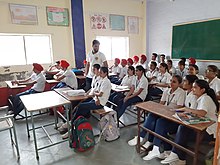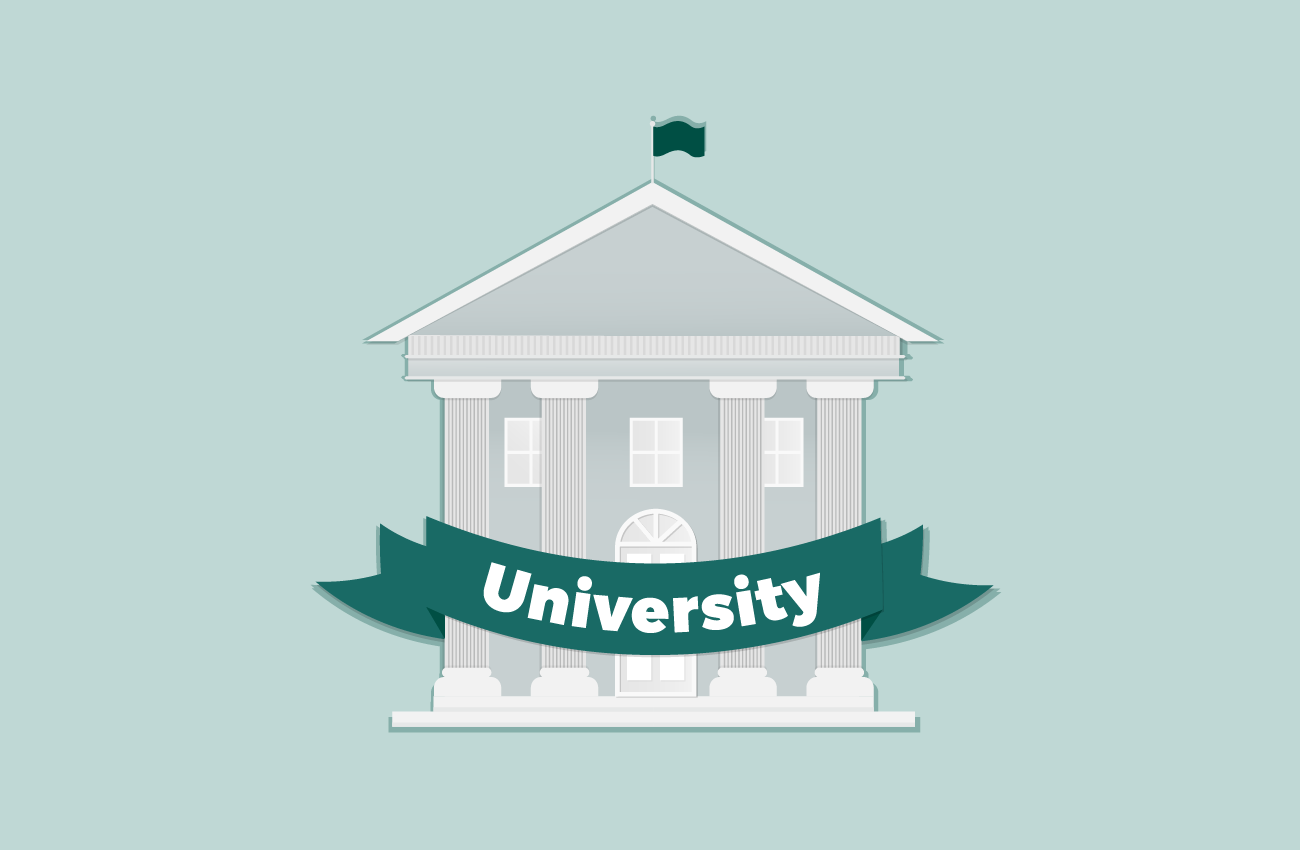
Secondary education can be described as one of two levels of International Standard Classification of Education. Lower secondary education can be considered the last stage of basic schooling. While level three refers to the stage before tertiary education. Both are important. Secondary education, however, is typically more intensive than elementary. This article will explain the differences between courses and their respective careers. There are other important things to remember:
School of Education
Secondary education means an institution offering a wide range of courses as well as a certificate that demonstrates maturity. A secondary school student completes their secondary education program at the age of sixteen. Reifezeugnis certificate is required to enroll in higher education. Secondary education plays a vital role in children's development, and prepares them for their future. A variety of courses are offered at secondary schools. These include general education, prevocational, English language, and career preparation.
Secondary education, which is composed of grades six to twelve, is an important part of the American educational system. Secondary education is the equivalent of high school in many English-speaking nations. Secondary education is the equivalent of high school. High school students often go on for college, university, and/or enter the workforce after their secondary education. In most cases, secondary education is voluntary. There are many choices for postsecondary educational options. A secondary education degree will give you the skills and knowledge necessary to be self-sufficient, independent or employed.

Curriculum
American education system used a curriculum that stressed practical learning and social utility. Many new vocational and practical subjects were introduced in the second half the 20th Century. A variety of subjects, such as family and driver education, consumer economics, and mathematics to help you live your daily life, were added to this curriculum. All of these subjects were eventually essential for secondary school students' education. Nevertheless, the primary focus of secondary school education remains the same: to provide students with a broad education and prepare them for college and career success.
There have been many reasons for changes in secondary education. Curriculum reform is needed because of trends in achievement and funding. In the United States, the average age of high school completion has increased from 73 percent in 1970 to 86 percent today. States are increasing graduation requirements as a result. These trends must be reflected in the Secondary Curriculum to meet the needs and expectations of all students. These challenges can be daunting.
Courses
For a career in teaching, it is important to take the foundational courses for a degree in secondary education. These courses provide a broad overview of American education and teach theories and concepts. These foundational courses are valuable because they can easily be applied in a wide range of elective areas. Students may want to form a personal education philosophy. Teachers need to be able to plan lessons and teach effectively. Teachers must also be able engage in active listening, and communicate clearly verbally.
Studying secondary education programs will prepare students for the certification examination. Candidates who want to be teachers must complete 10 core seminars and 2 capstone clinical practice courses. To earn a license, candidates must pass Praxis 2 Secondary Content Knowledge Test (or equivalent) The Hawaii Pacific University School of Education can be accredited nationally up to June 30, 2028. The program will enable you to become both a teacher and an AAQEP member.

Different career options
There are many choices after you complete secondary education. To help students make decisions, the guidance counselor, the school's Career Center, and the Occupational Outlook Handbook can be helpful resources. Although the internet can be a great resource, it is important that you only choose reliable sites. We've compiled a list of websites for post-secondary education and career exploration. Finally, the local library is a good resource for information about career options. They offer help in finding a job and free internet access for students.
High school students have the option to take courses in aged care, commercial cooking, and childcare. Students can also pursue social media and SEO, a growing field. Many companies are looking for social media professionals and experts. Business and accounting majors also have a wide range of career options available to them after high school. Many vocational schools offer career preparation programs. The student should investigate all options, regardless of the path they choose.
FAQ
What is homeschooling exactly?
Homeschooling refers to a way in which children are taught at home by their parents. It's also known as home education, self-education, and home educating.
Homeschooling is a great option for families who want to teach their kids at home. This allows them access to a quality education while staying at home.
They educate their children right from birth through high school. They decide which subjects they will study and how long each one should be. Every subject is taught by the student in his/her own time.
Parents decide when to begin teaching their children. Many schools recommend that children enroll in classes between the ages four and twelve. However, some families choose to wait to begin teaching their children until they reach kindergarten.
Parents can use any number or resources to assist them in learning the curriculum. You can learn valuable lessons from books, videos, websites and magazines.
Many families find homeschooling fits well into their busy lives. It allows parents to spend more quality time with their children than traditional public schools.
What is the difference between public and private schools?
All students have access to public schools at no cost. They provide education from kindergarten through high school. Tuition fees are charged by private schools for each student. They offer education from preschool to college.
Charter schools, which are private but publicly funded, are also available. Charter schools don't follow traditional curricula. Instead, charter schools give their students more freedom in learning what interests them.
Charter schools are very popular with parents who believe that all children should have equal access to education, regardless of their financial circumstances.
What does it mean to be a teacher in early childhood education?
Teacher in early childhood education needs to have specific training. Most states require teachers to be certified by their state boards before they can work in public schools.
Some states require teachers who teach math or reading to pass tests.
Some states require that teachers complete a specific amount of coursework in early childhood education.
Most states set minimum requirements for what a teacher should know. However, the requirements may vary between states.
What amount of money can a teacher earn in early education? (earning potential)
The median salary for early childhood teachers is $45,000 per calendar year.
There are however areas where salaries are higher than the average. Teachers in large urban school districts are often paid more than teachers in rural schools.
Salaries also depend upon factors such as how big the district is and whether or no teacher holds a master's/doctoral degree.
Teachers often start out making less than other college graduates because they don't have a lot of experience. Over time, however, their wages can increase dramatically.
Statistics
- In most developed countries, a high proportion of the population (up to 50%) now enters higher education at some time in their lives. (en.wikipedia.org)
- Globally, in 2008, around 89% of children aged six to twelve were enrolled in primary education, and this proportion was rising. (en.wikipedia.org)
- They are also 25% more likely to graduate from high school and have higher math and reading scores, with fewer behavioral problems,” according to research at the University of Tennessee. (habitatbroward.org)
- These institutions can vary according to different contexts.[83] (en.wikipedia.org)
- Among STEM majors, that number is 83.5 percent. (bostonreview.net)
External Links
How To
Where can I learn to become a teacher
Teachers are available in public elementary schools and private elementary schools.
To become a teaching professional, you will need to complete a bachelor’s degree program at any of the following universities:
-
A four-year university or college
-
A degree program for associates
-
There are some two-year community colleges programs
-
These three types of programs can be combined
To qualify for certification for teaching positions, applicants must meet state requirements. These include passing standardized testing and completing an internship period.
Most states require that all candidates pass the Praxis 2. This test measures knowledge in reading and writing as well math skills.
Many states require that candidates obtain a specialized license in order to be certified to teach.
These licenses can be issued by the state's boards of education.
Some states grant licenses without the need for additional testing. To determine if your state has granted licenses without additional testing, you should contact the board in your state.
Some states do not issue licenses unless the applicant has completed a master's degree program.
Other states allow individuals to apply directly to the state board of education for licensure.
There are many licenses available. They vary in cost, length, and requirements.
For example, some states require only a high school diploma, while others require a bachelor's degree.
Some states may require training in particular areas such as literacy or child developmental.
Some states require candidates have a master's before they can become licensed.
Many states ask potential teachers about their past employment when applying to be certified.
You might mention that you have worked in another field on your application.
However, the majority of states will accept any previous work experience regardless of what job it was.
Perhaps you would like to include your past job title, post, and years in service.
This information can be very helpful for potential employers.
It shows that they have relevant skills.
You might have acquired valuable work experience or learned new skills while working.
Your resume can show this to future employers.